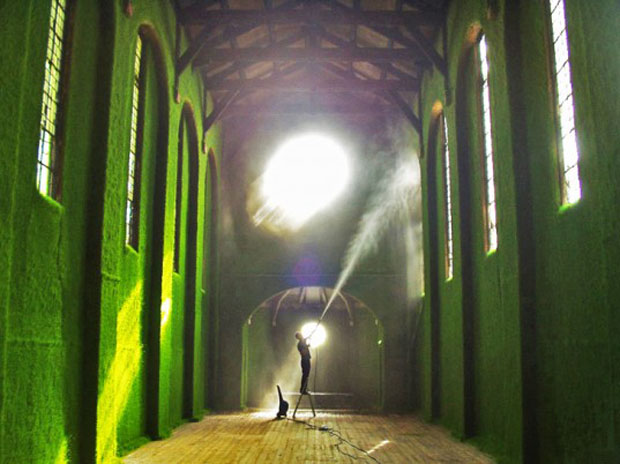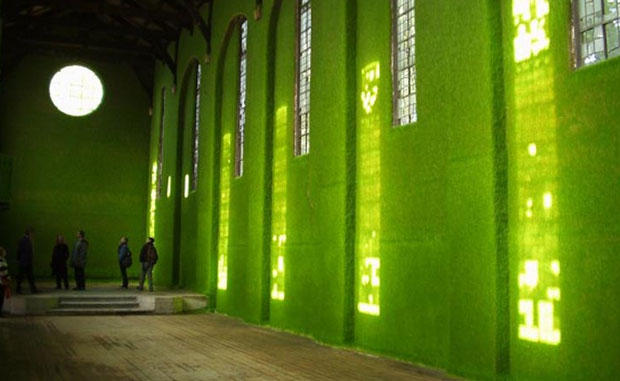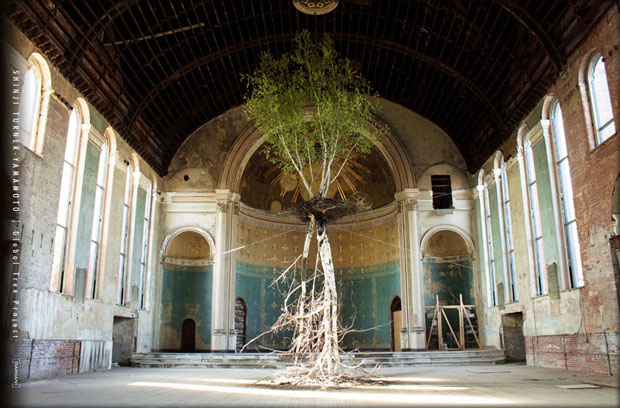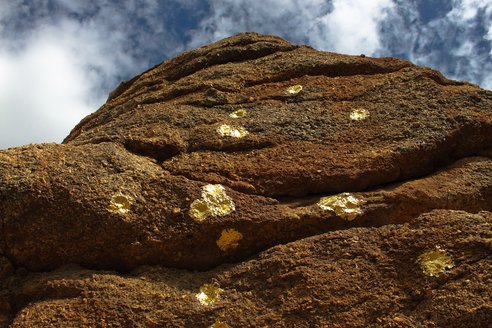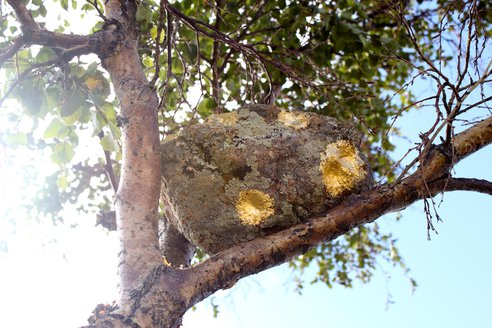Dilston Grove by Heather Ackroyd & Dan Harvey via cubeme
Dilston Grove by Heather Ackroyd & Dan Harvey (2003) via cubeme
The Bridge is a series of steps which rise up out of the water in front of you as you walk from one to the next, and then disappear back underneath behind you as you go, leaving you stranded with only one step visible in front of you, and one behind. The bridge ends in the middle of the water, where you find yourself totally isolated and cut off from the shore. You return the way you came… The project is on-going will ultimately lead to a permanent installation in a lake.via Michael Cross website
Aerial by Baptiste Debombourg (2012) via his website
Aerial by Baptiste Debombourg (2012) via his website
Aerial by Baptiste Debombourg (2012) via his website
Ariel was installed at the Abbey Brauweiler in Germany. The French artist Baptiste Debombourg lists among of Aerial’s dimensions 2 tons of glass. This feels to me like a wonderful use of churchly space, the glass is treated as if it spreads like water, and is very much related to the architecture and its light.
Hanging Garden by Shinji Turner-Yamamoto (2010) via his Global Tree Project
The Japanese-born, United States based artist Shinji Turner-Yamamoto works within the framework of his Global Tree Project. Hanging Garden, above was installed in the abandoned deconsecrated 19th century Holy Cross Church, in Cincinnati, Ohio.
Focused on nature and the environment, Shinji Turner-Yamamoto creates site-specific installations in venues throughout the world that explore the interplay between absence and presence and illuminate the spiritual in nature. Hanging Garden, and all Global Tree Projects completed over the last ten years [in 2010] in India, Ireland, Japan, Washington, DC, and Finland, make visible connections and similarities between plant life and humanity, and emphasize the interconnectedness of all life.
These installations by the Global Tree Project are in Baga Gazrin Chululuu, Gobi desert, Mongolia. They are not in church structures but have for me a sacred quality. The application of gold leaf to a geological mass sets it apart from the mundane landscape. As does setting a gold-leafed rock into a crotch in a tree. I doubt the gold leaf will endure but hope the growing tree will embrace the stone and make a wonderment.
Two Constellatoins by Shinji Turner Yamamoto via treehugger
Star Nest by Shinji Turner Yamamoto via treehugger
If you’re among those who define sacred spaces independently of official religious designations, then your sacred space will still likely have qualities of light and sound that rule out anywhere in Walmart. We have hearts that hunt the marvelous. The fortunate can recognize it and respond.
______________________________________________________________________
look further
I particularly recommend this website: Sacred Space: contemporary art
Heather Ackroyd & Dan Harvey
- • Ackroyd & Harvey
- • for a how-to of the Dilston Grove grass installation: Church Covered of Grass by Heather Ackroyd & Dan Harvey « CubeMe
- • Dilston Grove, LIFT index | | guardian.co.uk Arts a diary of the early days
- • Ackroyd & Harvey – Cape Farewell – The cultural response to climate change
- • Capital Offense
Baptiste Debombourg
Shinji Turner-Yamamoto
- • :: shinji turner-yamamoto ::
- • :: shinji turner-yamamoto :::: global tree project ::
- • Artist Hangs Living Trees in Abandoned Churches : TreeHugger (It’s not clear to me that the Global Tree Project has hung any trees in churches other than this one in Ohio.)

